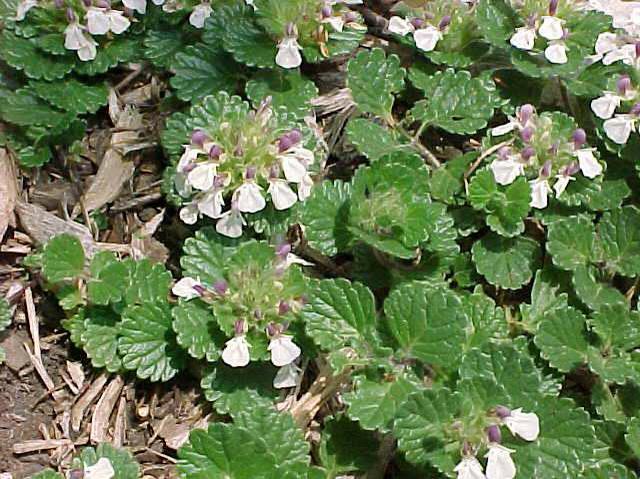Germander (Teucrium pyrenaicum)
Germander
Teucrium pyrenaicum, commonly called germander, is native to the Pyrenees Mountains where it primarily occurs in limestone soils. It is a low-growing, woody-based, herbaceous perennial or shrublet which typically grows to 3-10″ tall but spreads by trailing stems which root as they go to form a foliage mat 4-8″ wide. Whorls of 2-lipped, lavender and cream flowers (typical mint family) appear in terminal clusters on upright flowering stems (to 10″ tall) in late spring to early summer. Tiny, toothed, rounded, light green leaves (to 3/4″ wide and long).
Genus name comes from the Greek name, possibly named for Teucer, first king of Troy.
Specific epithet means of the Pyrenees.

Best grown in average to somewhat gritty, dry to medium moisture, well-drained soils in full sun. Tolerates poor soils as long as drainage is good. Needs a sheltered location in the St. Louis area where it is not reliably winter hardy.
| Hardiness zone | 6 - 9 |
| Sun light | Full sun |
| Water | Dry to medium |
| Maintenance | Medium |
No serious insect or disease problems. Winter injury can be a significant problem in the St. Louis area.
Best in rock gardens, herb gardens or border fronts as a small scale ground cover or edging plant.
| Common name | Germander |
| Botanical name | Teucrium pyrenaicum |
| Plant type | Herbaceous perennial |
| Family | Lamiaceae |
| Hardiness zone | 6 - 9 |
| Water | Dry to medium |
| Maintenance | Medium |
| Flower color | Lavender and cream |
| Flowering period | May - June |
| Height | 0.25 to 1 ft. |
| Width | 0.50 to 0.75 feet |